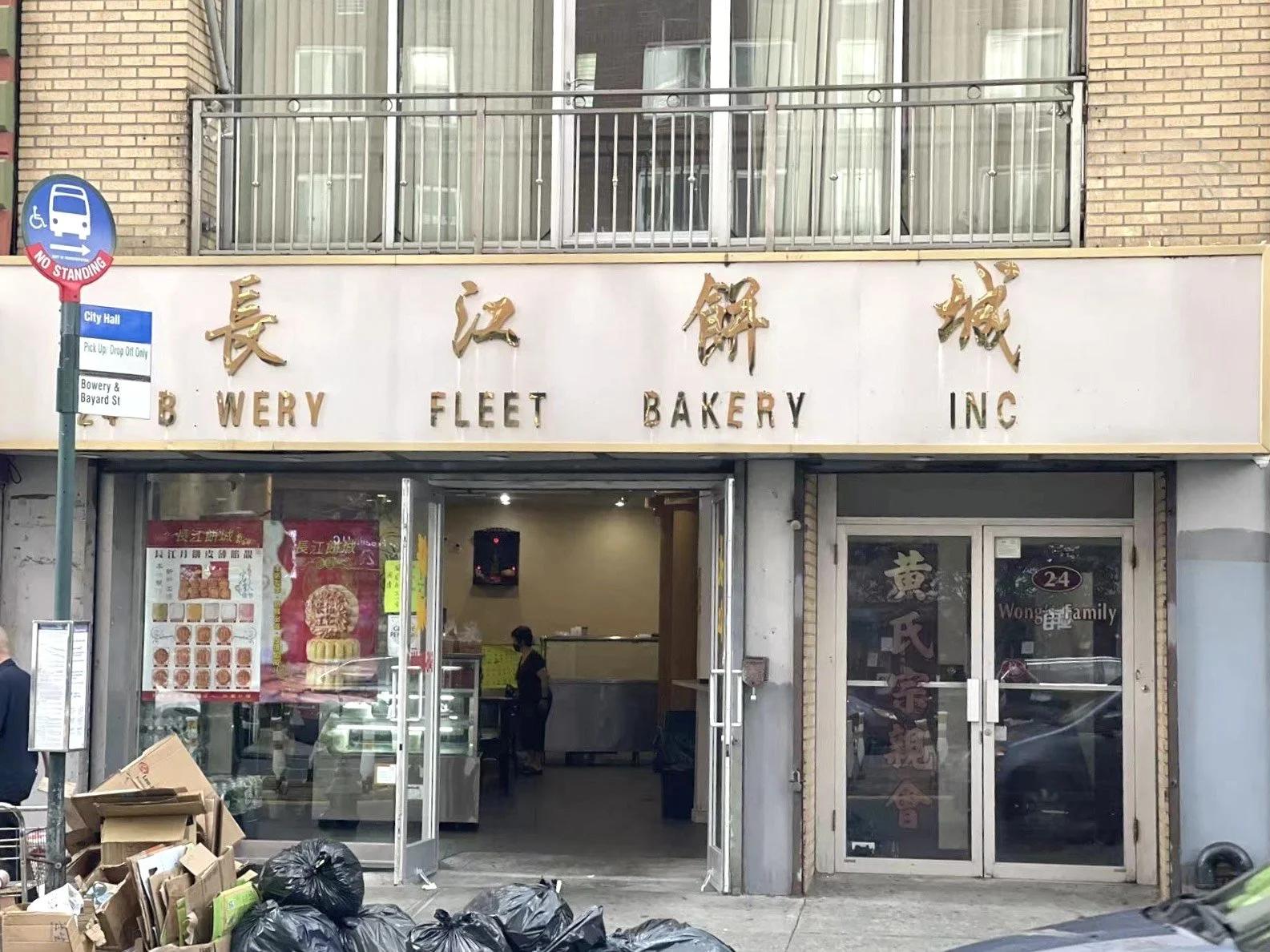Chinatown Faces an Uncertain Future as Businesses Struggle to Find Workers
Chinatown, a bustling neighborhood in New York known for its good eats and thriving street life, is undergoing a profound transformation as the immigrant workers age and their children leave for corporate jobs. Now small business owners are scrambling to find workers just to stay open and are wondering what lies ahead for their neighborhood.
By Vanessa Chen
As Wen Liang, 47, takes out his last batch of pineapple buns from the oven, he eyes his cake frosting on the stand mixer while also taking a customer order.
Liang is the owner, cake decorator and baker of Fleet Bakery in the Chinatown neighborhood of New York City. Fleet Bakery is a local Chinese bakery that has been in operation for over five years and sells more than 20 types of buns in addition to hot food.
It has become a fixture in the neighborhood, known among loyal customers for its quality and variety. But maintaining that quality and selection, let alone merely staying in business, has become increasingly difficult, Liang says.
He described how his workload has grown over the past two years as workers have become more difficult to find. “I used to pay a few hundred dollars to the local newspaper to advertise a need for help, but as time went on, this method proved to be less and less effective,” he says in his native Cantonese.
Wen Liang, owner of Fleet Bakery in Chinatown, New York City, kneading and rolling dough on Aug. 11, 2022. Photo by Vanessa Chen
Liang is just one of many business owners in Chinatown grappling with a worker shortage that has left them scrambling to stay afloat. In many cases, the work is difficult and the hours are long, and the owners can only watch as workers opt for other, less arduous jobs.
According to Mastercard Center for Inclusive Growth, consumer spending in Chinatown restaurants dropped by almost 96% in March 2020. A year later, Chinatown foot traffic was still down by 30%, according to an analysis by Bloomberg. As small businesses struggle to gain revenue, the median salary for Chinatown workers, which the NYU Furman Center reports was $43,300 in 2019, has been further reduced to wages impractical to the cost of living.
Labor shortages have long been a challenge for small businesses in Chinatown, but the shortage has only become more acute since the onset of the pandemic.
Even with overall employment levels nationally returning to pre-pandemic levels, the number of workers at restaurants and hotels, where the jobs are often difficult with low pay, has yet to recover. Chinatown is no exception.
Storefront of Bowery Fleet Bakery. Credit: Vanessa Chen
“It’s hard work. Physically, it takes a lot of strength to roll dough every day and carry metal trays full of baos. Many people find other jobs that require less physical labor and pay more, ” Liang says.
Liang adds that while the weekly unemployment benefits provided a sense of security for workers during the pandemic, the generous payments of up to $600 a week also deterred workers from returning to their previous jobs. Those payments, he says, seemed to remove incentive to work at his bakery.
The challenge of recruiting workers to Chinatown businesses is only magnified by reports of exploitation by some employers. Yolanda Zhang, 25, an organizer at the Chinese Staff and Workers’ Association, an advocacy group promoting workers’ rights, says many Chinatown workers face “very violent” and “inhumane” conditions.
Some jobs require employees “to work 24 hours a day, multiple days a week, paid under minimum wage,” she says. Zhang cites the example of the Joy Luck Palace, a dim sum restaurant that closed in 2018. According to Zhang, Joy Luck workers were not paid in the months before closing, and in months before that, they had been working overtime at the same minimum wage. The workers won a judgment against Joy Luck Palace in United States District Court, yet the restaurant never paid the workers, Zhang says.
“It is a slap on the face to say that as Chinese workers, the American laws can’t even protect you,” Zhang says.
While Zhang opposes the difficult working conditions, she also acknowledges the vulnerability of small businesses when there is a labor shortage. To this, she singles out the lack of government funding.
“Many workers are not left with a lot of options, and the state is not helping to revive opportunities in the community. Instead they are pumping more money into building luxury towers, displacing people who cannot afford the rent,” Zhang says.
Pell Street in Chinatown, New York City. Credit: Wes Hicks/Unsplash
Wellington Chen, executive director of Chinatown Partnership and board member of New York State Economic Development Council, says Chinatown’s economy depends on three groups: local residents, nearby office workers and tourists.
He cited a confluence of economic forces that have worked to dampen business in Chinatown, along with a rise in bias among people who blame Asians for the spread of Covid-19.
“A myriad of elements are converging at the same time: the anti-Asian hate, the Great Recession, the remote working, the inflation,” Chen says. All these factors contribute to a decline in foot traffic around Chinatown, he says.
Yet at the same time, the neighborhood is contending with its own residents migrating to other neighborhoods in search of more room to work and live.
“The housing production for Chinatown is atrocious. In the historic core of Chinatown, we haven't built one unit in 50 years,” Chen says. He also cited a lack of basic essentials in tenement buildings, yet the increasing rent prices that make living in Chinatown not only undesirable but unfeasible for locals.
In the end, Chen says, Chinatown will survive, but it will likely look a lot different.
“Will Chinatown be here? Yes. We survived the pandemic; we survived all the turmoil, and we are still here. But it will not be the same. There is a lot of uncertainty.”




